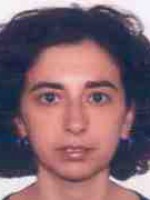abstract
The increasing emphasis on cleaner and environmentally benign extraction procedures has led to the systematic investigation of systems containing ionic liquids (ILs) a new class of non-volatile alternative solvents. In this work, aqueous biphasic systems (ABS) composed by hydrophilic ILs and aminoacids were studied aiming at obtaining new evidences regarding their ABS formation ability and their capacity for the extraction of specific biomolecules. On the basis of the IL cation 1-buty1-3-methylimidazolium, the IL anion influence on ABS formation was assessed through its combination with tetrafluoroborate, triflate, and dicyanamide anions, with three different aminoacids: L-lysine, D,L-lysine HCl and L-proline. Ternary phase diagrams (and respective tie-lines) formed by these aqueous solutions of the ILs and the selected aminoacids, were measured at 298 K and atmospheric pressure. The results indicate that the ability of an IL to produce ABS closely follows the decrease in the hydrogen-bond accepting strength of the IL anion. In addition, the ability of aminoacids to form ABS follows the order: L-lysine approximate to D,L-lysine HC1 > L-proline. Finally, the extraction capability of the studied ABS was evaluated through their application to the extraction of three biomolecules (caffeine, ciprofloxacin and ciprofloxacin HCl). (C) 2010 Elsevier B.V. All rights reserved.
keywords
MUTUAL SOLUBILITIES; 2-PHASE SYSTEMS; HYDROCHLORIDE FORMS; PHASE-BEHAVIOR; PLUS WATER; 298.15 K; ANTIBIOTICS; SALT; IMIDAZOLIUM; SEPARATION
subject category
Engineering
authors
Dominguez-Perez, M; Tome, LIN; Freire, MG; Marrucho, IM; Cabeza, O; Coutinho, JAP
our authors
Groups
G4 - Renewable Materials and Circular Economy
G5 - Biomimetic, Biological and Living Materials
acknowledgements
The authors thank the financial support from Ministerio de Educacion y Ciencia of Spain and European Regional Development Fund for Project FIS2007-66823-C02-01. The authors also acknowledge the grant of UDC-Banco Santander of Montserrat Dominguez Perez, and pos-doctoral grants SFRH/BPD/44926/2008 of Luciana I.N. Tome and SFRH/BPD/41781/2007 of Mara G. Freire.





